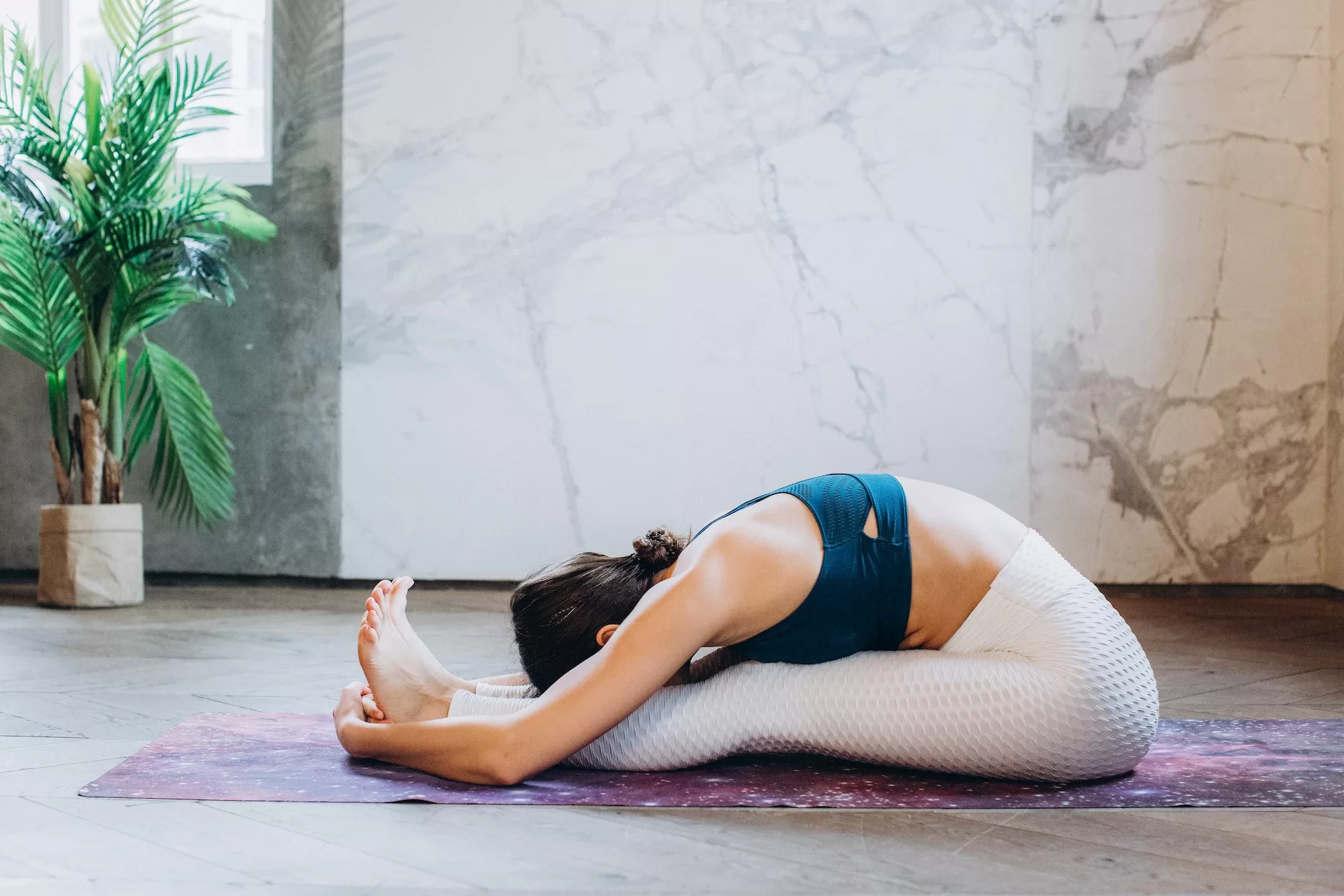Paschimottanasana, often referred to as the Seated Forward Fold, is one of the basic postures of Ashtanga yoga. Paschimottanasana has a wide-reaching effect of engaging the body and mind, particularly targeting the lower back, hamstrings, inner thighs and lumbar spine. It’s no wonder that Paschimottanasana is so commonly used in modern day yoga practice – it is a very complex posture that can be adapted to varying levels of practice.
Origins and Meaning
Like much of modern day yoga, Paschimottanasana has its ancient roots in the Indian tradition of Vedic culture. Paschimottanasana literally translates to ‘intense stretch of the west’, which is often interpreted as “intense stretch of the posterior side of the body“.
To the ancient practitioners of yoga, this posture was an opportunity to practice physical and mental equilibrium, a harmonizing of their inner and outer body and mind.
Alignment and Benefits
In its full expression, Paschimottanasana is a dynamic and multidimensional posture that incorporates mental alertness, physical presence and relaxation -all at the same time.
Alignment for the pose is crucial for not only increasing the pose’s effectiveness, but also for minimizing the risk of injury. As this pose requires a high degree of flexibility, one should always include a graduated approach to the final posture before attempting a more advanced version. Those who are relatively more flexible in the hamstrings, inner thighs, and lower back will find it easier to move into a deep forward fold.
Some of the key alignments to consider when performing Paschimottanasana are:
• Spinal alignment: Maintain the spine in a neutral, extended position. Try not to compress any part of the spine – instead lift up through crown of the head and create space between each vertebra.
• Shoulders alignment: Your shoulders should be relaxed and drawn back. Pull the shoulder blades down and lift through the collar bones as you keep the neck and spine extended.
• Hip alignment: Soften the outer hips, rotating them outward and lift the groin area. Keep the legs externally rotated, with the feet placed firmly on the floor and the knees facing downward.
• Plantar alignment: Since the entire weight of the body will bear on the feet while in Paschimottanasana, the feet must be firmly planted. The toes should be flexed towards the shins, with the soles lifted and tucked in.
The physical benefits of Paschimottanasana are many, ranging from alleviating back pain to improving digestion and keeping the spine flexible. It is especially good for stretching and toning the back and hamstrings, strengthening the abdomen, relieving tension in the spine and increasing flexibility.
The mental benefits of Paschimottanasana are often overlooked, yet are just as important – if not more so – than the physical benefits. This pose requires going inward, allowing us to surrender completely and free our minds from distractions.
Regular practice of Paschimottanasana can help to increase concentration and mindfulness, reducing stress and improving overall mental health.
Traditional Contraindications
Due to the nature of Paschimottanasana, there are some standard contraindications that should be kept in mind when practicing it. Individuals with a history of lower back injury should take extra precautions with this posture, as there can be potential for strain on the lower back. It is similarly not recommended to practice Paschimottanasana if you have a hamstring injury. Women who are in the very early stages of pregnancy are advised to be cautious with this posture, as the deep flexion may be uncomfortable and potentially dangerous.
Conclusion
Paschimottanasana is a complex and powerful posture, requiring balance between strength and flexibility, concentration and surrender. When practiced correctly, the posture can release the mental and physical tension that tends to build up within the body.
This makes it suitable for both first-time yoga practitioners and more experienced yogis, offering a invigorating and holistic experience. By exploring and understanding the alignment, origins and mental and physical benefits of Paschimottanasana, one can unlock the potential of this amazing posture and open up to the extraordinary power of meditation and movement.

